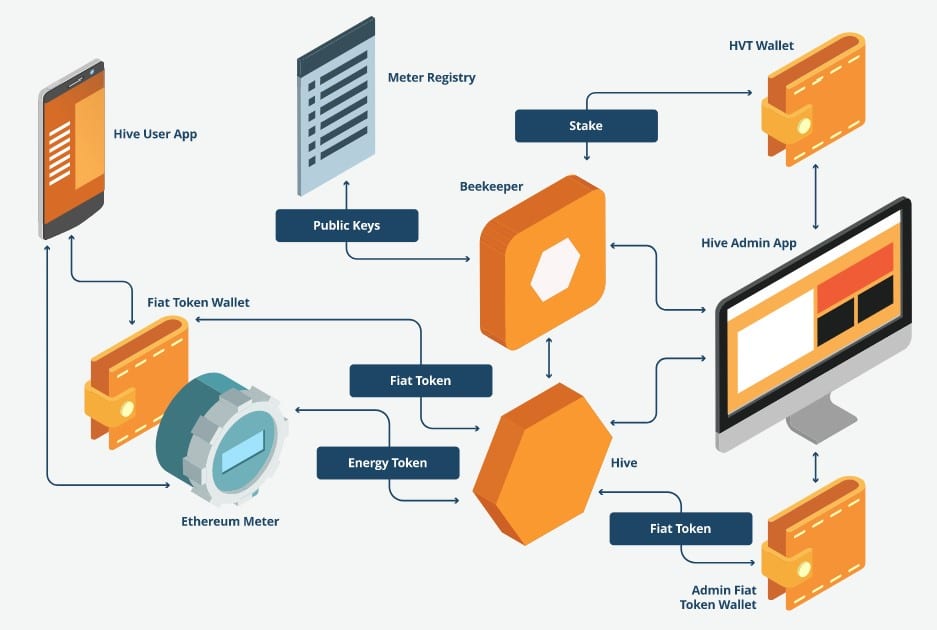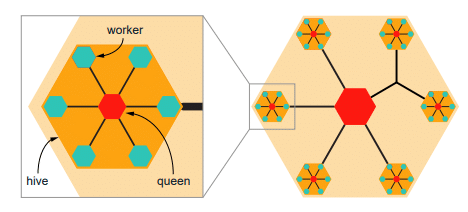Hive Power provides anyone with the possibility to create and manage energy communities on the Ethereum blockchain. The goal of Hive Power is to create energy sharing communities where all participants are guaranteed to benefit from the participation, reaching at the same time a technical and financial optimum for the whole community.

What ?
A Hive provides a distributed energy market platform where every prosumer can exchange its energy consumption and production. The basic component of a Hive is the Worker. A Worker is a blockchain enabled electrical meter and it is generally linked to a prosumer, e.g. a single appliance, a single family household, a storage system, a solar power plant, an industrial facility. A Worker belongs to a single Hive. A Worker measures and certifies its own energy production and consumption, and joins the Hive energy market. More precisely, the interface with the electrical grid is monitored by an Ethereum Meter equipped with a hardware oracle, a cryptographically attestable anti-tampering sensor. The certified energy data from the hardware oracle is gathered by a blockchain computer and tokenized by a smart contract. The Worker also includes a forecasting service that predicts the energy consumption/production and an energy bidding system interacting with the Hive through the worker smart contract.

How ?
Open Platform
Hive Power platform is open to third-party hardware and software manufacturers.

The platform design complies with grid constraints on power quality, current limitation and peak shaving.




Hive Power runs on the Ethereum blockchain, making use of multi-party off-chain channels for fast and cost-effective transactions. Energy transactions are paid with third-party stable tokens.
Why ?
The first application of Hive Power will be the creation of self-consumption communities (SCC) on a condominium, where the members of the community consume together the produced solar electricity from their own roof by increasing their energy autarky.
Starting from this initial application, Hive Power will grow in size by including any kind of producers and consumers in the low voltage electrical grid in cooperation with DSOs.
Hive Power will also support micro-grid communities, where the connection to the main grid is not ensured continuously and the requirements of technical and financial operation are strict.
Hive Power is perfectly tailored to the current grid transition, enabling a safe and cost effective operation of the electrical grid by ensuring a fair and resilient energy market for all actors involved.
In this context, enabling technologies like blockchain, and more specifically Ethereum, will allow decentralized prosumers to safely buy and sell electricity to each other at negligible marginal costs. New aggregators exploiting this technology can act as energy suppliers and compete in the global market. In this context, distributed energy storage systems (DESS) could also participate to the energy market and thanks to their high flexibility they could quickly respond to dynamic price signals. This represents a big opportunity of cost reduction for the end user.
